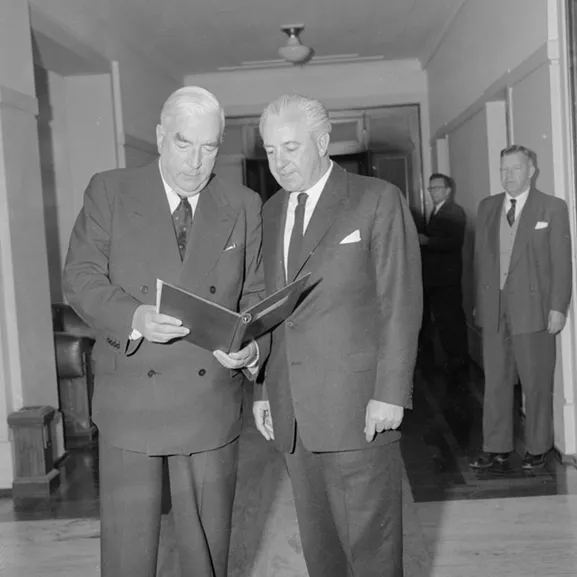How often should we have an election – every three years or every four?
- DateTue, 25 Jul 2017
Does it ever feel like we've just got over the last election before the next one looms?
Every now and then there is talk of replacing three year parliamentary terms with four. What would the benefits be? What about the drawbacks? Why do we have three years anyway?
Here's the low down.
First, what does a fixed term mean?
A 'fixed term' means the term of an elected official expires automatically and an election is held at the same time every time, no matter what the circumstances. Fixed terms are actually more common around the world – the United States, France, Germany, Italy, Canada and the UK all have them to some degree. So do most of the Australian states and territories.
The alternative is an unfixed term, where elections are called at the discretion of the government, until a maximum time has elapsed. The unfixed term was the norm for most parliaments based on the Westminster system until quite recently. This system was adopted in most British colonies, most of which eventually replaced it with a fixed term. Australia's Commonwealth Parliament, however, never has.
Most jurisdictions with fixed terms have provisions that mean new elections can be held early under certain circumstances, such as when there is a successful motion of no-confidence, or by agreement between government and opposition.
Why are our parliamentary terms three years anyway?
Only Australia, New Zealand, El Salvador, the Philippines, Mexico and Nauru choose their lower house for a three-year term. Four-year and five-year terms are much more common. Among Westminster parliaments, New Zealand and Australia are the only ones with three-year terms. British, Indian, Irish, South African elections are fixed to every five years, Canadian are every four.
So why are ours so short? When drafting the Australian Constitution, its authors were much more interested in the financial provisions and powers of the parliament than they were with time between elections. They chose three years because it was the maximum length of parliamentary terms in most of the Australian colonies. One of the drafters of the Constitution, Andrew Inglis Clark, believed since most Australian parliaments had three-year terms, it was logical to have the same for the new Commonwealth. Interestingly enough, all the state parliaments are now elected for four-year terms.
Does this apply to the Senate too?
The Senate's term is fixed. All Senators from the six states serve six-year terms, taking office on 1 July, with half of them up for re-election every three years. Technically, elections for the House and half the Senate don't have to be held at the same time, and indeed for a period in the 1960s and 1970s they weren't. Now, for logistical reasons, elections are usually for both. The 2016 election was a double dissolution, electing the whole senate, and backdating half the terms so some senators had to face re-election in 2019.
What would be the advantage of changing to a fixed four years?
Some of the most commonly given reasons are:
- It would be cheaper, since there would be fewer elections, which a cost significant amount.
- People would have less election fatigue, since they wouldn't have go through election campaigns as often.
- Politicians would have more time to focus on legislation and governing, with less worry about the next election being right around the corner.
- It creates certainty in the community about when elections will be, and creates less risk for businesses and voters who can plan around the set date.
- It means the government of the day won't be able to call an election whenever it likes, to take advantage of political circumstances.
- Governments would be able to better plan policies and govern effectively if they know in advance precisely when the parliament's term will expire.
- Almost all the states and territories have fixed four-year terms.
Sounds reasonable. What's the case against four-year terms?
Reasons often given against the proposed change include:
- It makes politicians less accountable, for having to face electors less often.
- It means unpopular governments will be in for longer.
- It means electing Senators for either an eight-year term, which is much too long, or a four-year term, which means the whole Senate would be chosen every election. Either that, or elect the Senate separately, which would mean more elections (thus defeating the point).
- It stops the prime minister or government seeking a mandate for new policies, or new leadership.
- Voters might have to wait longer to give their approval or disapproval to governments and policies.
- It would lead to longer election campaigns, which are more expensive.
Has Australia ever voted on this idea before?
Yes, several times. The maximum terms of parliament are laid out in the Constitution, so changing the term from three years to four would require a national referendum. In 1988 the Hawke government asked the electorate to vote yes on extending the House of Representative term to four years, and shortening the Senate to four, meaning the entire Senate would always be chosen at once. Voters rejected this proposal, which also would have fixed the election dates.
Before 1988, other attempts had been made to change the rules. Four times (1906, 1974, 1977 and 1984) voters were asked about simultaneous elections; these proposals wouldn’t have necessarily fixed the terms or extended them, but meant Senators would have had looser terms, effectively serving for two House terms, however long they happened to be. The reasoning was that it would make sure elections for the two houses were always held at the same time. All four times, voters turned the proposals down.







